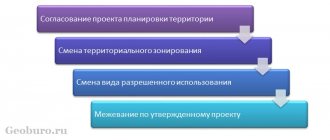Home / Real estate / Land / Taxes
Back
Published: 04/01/2017
Reading time: 11 min
0
910
As you know, the Constitution of the Russian Federation obliges all citizens of our country to pay taxes and fees established by law. This also applies to land owners. For them, tax law provides for the payment of a special tax at the local level, called land tax. However, depending on the specific type of land, the conditions for paying taxes on them also differ.
Therefore, this article will focus on paying taxes on land plots related to agricultural lands.
- Legislation
- Who should pay the tax?
- Tax rates on agricultural land
- Payment deadline
- Payment procedure
- Tax benefits
Legislation
The following Russian laws regulate the issue under consideration:
- Tax Code of the Russian Federation. It consists of two parts, namely, Chapter 31 of the second part of the Tax Code of the Russian Federation is devoted to land tax (who is the taxpayer, what relates to the objects of taxation, what tax base is applied, what benefits for paying land tax are provided, etc.).
- Special Federal Law No. 101-FZ of July 24, 2002, called “On the turnover of agricultural land.” It is dedicated specifically to agricultural land, what it includes, what actions can be carried out with such land plots and what restrictions there are. In addition to those that fall within the competence of the Land Code of the Russian Federation.
- Land Code of the Russian Federation. It regulates the circulation of agricultural land plots, but only those intended for gardens, vegetable gardens, dachas, garage construction and the placement of real estate on them.
Following the official definition, agricultural land refers to areas located outside populated areas and allocated specifically for agriculture. This could be farming or subsidiary farming.
And if we are talking about cooperative land, then on such plots you can plant gardens, vegetable gardens and build summer cottages.
What to do if payments are charged illegally?
No one can be forced to pay taxes and other obligatory payments that are not established by law, or the calculation and collection of which are carried out not by law, or in a manner other than that provided by law. Therefore, it is imperative to defend your rights. To get started, we recommend contacting your tax preparer. If the issue is not resolved, it is necessary to request an official clarification from the tax authority. To do this, you should write a letter to the head of the tax department.
If you disagree with the position of the tax service, you can send an application to the court and defend your rights in a judicial body.
Based on the information given above, it should be stated that private household plots, subject to certain conditions, can minimize taxes to a large extent: some payments are not paid at all, others - in a small amount.
If you find an error, please select a piece of text and press Ctrl+Enter.
Who should pay the tax?
The above laws regulate several groups of tax payers for plots of land:
- Russian citizens (owning land by right of ownership, lifelong possession or permanent use);
- Foreigners;
- Stateless persons;
- Legal entities.
The legislative framework
The main elements of taxation of land plots are established by Chapter 31 of the Tax Code of the Russian Federation, in particular:
- persons included in the category of payers (Article 388);
- what is the object of taxation, and from which lands payments are not levied (Article 389);
- how to calculate the amount on which tax will be withheld (Article 391);
- what is the tax rate (Article 394);
- a list of persons and situations when it is possible not to pay tax (Article 395);
- frequency of payment (Article 397).
At the same time, paragraph 1 of Article 387 of the Tax Code of the Russian Federation stipulates that the land tax operates on the basis not only of the code, but also of decisions of local deputies or laws of the constituent entities of the federation (for Moscow, St. Petersburg and Sevastopol).
Also, paragraph 2 of Article 387 of the Tax Code of the Russian Federation gives representative bodies of local self-government and legislative authorities of cities of federal significance the right to approve:
- tax rates within the limits specified by the code;
- additional preferences;
- deadlines for tax payment by enterprises.
Each municipality or city of federal significance has its own decision of deputies or city law. For example, Law of Moscow dated November 24, 2004 No. 74, Decision of the Yekaterinburg City Duma dated November 22, 2005 No. 14/3.
Tax rates on agricultural land
This indicator as a whole, applied to a land plot, depends on its purpose and the way in which it is used.
It is worth immediately noting that the land tax has not undergone any changes in 2021. The conditions under which taxpayers can legally count on a rate reduction have also remained unchanged. This reduced rate applies if two conditions are present simultaneously:
- the plot of land must belong to lands within agricultural use zones in populated areas or to agricultural lands;
- the land plot should be used for agricultural production.
Tax rates are set by local authorities. At the same time, they cannot make them higher than those recorded in the Tax Code of the Russian Federation. And the Tax Code for agricultural land establishes a tax rate equal to 0.3% of the value of a specific plot according to the cadastre. This figure is underestimated, since for other categories of land the rate is 1.5%.
However, the 0.3% rate will only apply when the above conditions are met. This rate will not apply in the following cases:
- if, for example, a plot is purchased for subsequent sale;
- used for purposes other than gardening, vegetable gardening, etc.;
- if the land plot is not located in an agricultural zone.
There are a number of officially established regulations of the Government of the Russian Federation No. 369 of April 23. 2012 of the signs by which government agencies determine whether a site is used for agriculture.
In addition, the Ministry of Finance of Russia (clarification dated July 16, 2014) clarified that if the authority has established the fact that a site is not being used for agricultural production, then a land tax is levied in relation to such a site based on the rate that the municipal authorities have established for other lands (that is, this from 1.5% and above).
What taxation awaits the owner if he opens a personal subsidiary plot?
Private household plots do not belong to organizations or entrepreneurs, therefore, such farms apply the tax payment procedure inherent to individuals.
Income from product sales
Chapter 23 of the Tax Code of the Russian Federation obliges citizens to pay taxes on various types of income, such as wages, bonuses, winnings, income from the sale of property, etc.
At the same time, tax legislation contains a wide range of benefits and concessions for individuals. Thus, according to subparagraph 13 of Article 217 of the Tax Code of the Russian Federation, income from the sale of products by representatives of personal subsidiary plots, grown by them independently or with the involvement of relatives, is not subject to income tax.
However, to receive a preference, certain conditions must be met:
- Product production must occur without the involvement of any third party workers. Hired labor can only be used by individual entrepreneurs.
- The area of land should not exceed the maximum size established by the Federal Law “On Personal Subsidiary Farms” or the law of a constituent entity of the Russian Federation. Clause 5 of Article 4 of the Federal Law states that the maximum plot size can be 0.5 hectares. At the same time, at the level of a federal subject, a decision may be made to increase this limit, but not more than 5 times.
For example, in the Tomsk region the limit is 2.5 hectares, including in populated areas - no more than 1 hectare. In the Leningrad region, the maximum allowable area is 0.99 hectares of land.
To receive a benefit in the form of exemption from personal income tax, a representative of a private household plot must provide the tax authority with a document proving that the products sold were grown by him on his own plot. Such a document is issued by a local government body, the leadership of a non-profit association of citizens (gardening, dacha or gardening).
If the private household plot does not meet the above requirements and cannot take advantage of the exemption, then personal income tax must be paid on all income received from the sale of its own products. When paying, you need to take into account that the tax rate is 13%, which means the tax amount is 13% of the proceeds.
At the same time, when calculating the amount of mandatory payment, members of private household plots have the right to reduce their taxable income by tax deductions provided for in Articles 218-221 of the Tax Code of the Russian Federation. Then the tax amount will be less.
Earth
Persons with personal subsidiary plots are taxpayers for land tax.
In this case, to pay the tax, you should be guided by the presented norms:
- land plots are recognized as an object of taxation (clause 1 of Article 389 of the Tax Code of the Russian Federation);
- the tax base is calculated as the cadastral value of land (clause 1 of Article 390 of the Tax Code of the Russian Federation);
- rates are established by the laws of the constituent entities of the federation or decisions of the council of deputies (clause 1 of article 394 of the Tax Code of the Russian Federation);
- the rate for private household plots cannot be higher than 0.3% (subclause 1 of clause 1 of Article 394 of the Tax Code of the Russian Federation);
- the amount of payment is determined by the tax inspectorate (clause 3 of Article 396 of the Tax Code of the Russian Federation);
- to pay tax, a notification from the tax office is sent to private household plots (clause 4 of Article 397 of the Tax Code of the Russian Federation);
- it is necessary to pay the tax before December 1 (part three of paragraph 1 of Article 397 of the Tax Code of the Russian Federation);
- participants in private household plots do not fill out the declaration (clause 1 of Article 398 of the Tax Code of the Russian Federation).
Consequently, land tax is paid by farms once a year in accordance with the amount calculated by tax authority specialists.
To calculate the payment, the rates established by local authorities are taken, but not more than 0.3% of the cadastral value of the site.
For example, in Moscow the rate is 0.025%, in the Moscow region the rates can reach the maximum size (in particular, in the cities of Korolev, Mytishchi). In St. Petersburg the rate is 0.042%; in the Leningrad region there are also maximum rates (Kurskoye, Kolchanovskoye rural settlements).
Property
According to paragraph 1 of Article 401 of the Tax Code of the Russian Federation, property tax is imposed on residential buildings, apartments, garages, as well as non-residential premises. Thus, private household plots that have a house or other buildings on their plot are included in the category of taxpayers. At the same time, subclause 15 of clause 1 of Article 407 of the Tax Code of the Russian Federation provides a preference for private household plots: payment is not calculated for outbuildings whose area does not exceed 50 square meters. m.
To receive the benefit, you must write an application and send it to the tax authority. Documents confirming the right to relief can be attached to the application . The application form and recommendations for its preparation are specified in the Order of the Federal Tax Service of Russia dated November 14, 2021 No. ММВ-7-21/ [email protected]
If there are buildings subject to taxation on the territory of private household plots, then the tax should be paid based on the following features:
- the tax is calculated based on the cadastral or inventory value of the premises, depending on which method is used on the territory of the locality (clauses 1 and 2 of Article 402 of the Tax Code of the Russian Federation);
- When calculating the tax on a residential building based on the cadastral value, 50 sq. m. m (clause 5 of Article 403 of the Tax Code of the Russian Federation);
- The tax rate when taking into account the cadastral value is 0.1%. In this case, the amount can be reduced to 0 or increased by 3 times by local authorities (subparagraph 1 of paragraph 2 and paragraph 3 of Article 406 of the Tax Code of the Russian Federation);
- another calculation option is as follows: the inventory value of the property is multiplied by a coefficient of 1.481 and by a rate (from 0.1% to 2% depending on the value) (clause 4 of Article 406 of the Tax Code of the Russian Federation).
Payment of property tax occurs in the same manner as land tax: on the basis of a payment received from the tax office. Payment must be made by December 1st.
Subsidies
The state is implementing certain measures to support private household plots. One of the measures is the provision of subsidies - the allocation of budget funds that are not required to be returned. Despite the fact that the subsidy represents state assistance, based on paragraph 1 of Article 41 of the Tax Code of the Russian Federation, it is income. And the income of citizens is subject to personal income tax.
At the same time, subclause 13.1 of Article 217 of the Tax Code of the Russian Federation provides for a preference in the form of tax exemption for money received from the budget, but subject to the following restrictions:
- targeted use of funds;
- the size of plots owned by private household plots should not be more than 0.5 hectares (or another size if established by the law of the subject of the federation, but no more than 2.5 hectares);
- production should be grown only on one’s own without the help of hired workers.
In the event that the private household plot does not fulfill at least one condition, personal income tax is paid in the usual manner: at a rate of 13% once a year until July 15 after filing a tax return.
More details on how to register private household plots and receive a subsidy can be found here.
Owner's IP status
Citizens with personal subsidiary plots have the right to form a peasant farm (peasant farm), and to do this register as an entrepreneur (IP). In addition, the owner of an individual entrepreneur can become an individual entrepreneur without forming a peasant farm.
As the Federal Tax Service explains, if a private household plot participant is an individual entrepreneur, then tax inspectors almost always include income from the sale of products grown in private household plots in his income from business activities.
An individual entrepreneur can work in the following modes:
- Unified Agricultural Tax (USAT). The payment is calculated as the difference between the income and expenses of the individual entrepreneur, multiplied by 6%.
- Simplified system (STS). The tax is defined as 6% of the total income or 15% of profit (income minus expenses).
- Unified tax on imputed income (UTII). The tax rate is 15%. UTII can be applied to strictly defined types of activities in accordance with paragraph 2 of Article 346.26 of the Tax Code of the Russian Federation. If the sale of agricultural products does not fall under the agreed conditions, all taxes are paid on a general basis.
- The patent system also applies only to the types of activities indicated in paragraph 2 of Article 346.43 of the Tax Code of the Russian Federation. The payment is equal to 6% of the potentially receivable revenue.
The Tax Code provides rules according to which an individual entrepreneur using a particular tax system is exempt from a certain list of taxes. Other taxes must be paid in accordance with the generally established procedure. For example, individual entrepreneurs on the Unified Agricultural Tax are not exempt from land tax.
Payment deadline
For the current year, there is a single rule for paying land tax (including for those land plots that are classified as agricultural land) - this is to make payment no later than December 1, 2021.
The Federal Tax Service Inspectorate, no less than 30 days before the deadline for paying the tax on the allotment, sends appropriate notifications to the payers (at the place of their registration). The notice contains the following information:
- the tax base;
- tax amount;
- the date when the tax will be due.
It should be remembered that if the deadlines for paying land tax are violated, a penalty will be charged for this amount for each overdue calendar day in the amount of 1/300 of the bank refinancing rate in effect at the time the arrears were established (meaning the rate of the Central Bank of the Russian Federation).
As one of the ways to force payment of overdue taxes, the tax office can send a notice to the debtor's employer that the employee has a tax debt and needs to pay it off from wages. In addition, the defaulter may be restricted from leaving the Russian Federation. According to Russian legislation, a fine for non-payment of taxes is not collected from citizens.
As for legal entities, they are required to independently calculate the amount of tax and pay it. They do not receive notifications from the tax office, so they must report and pay the land tax themselves.
What will change in 2021
In 2021, uniform deadlines for payment of land tax by legal entities are established. The deadline for filing annual returns and transferring taxes is March 1 of the following reporting year. Advance payments are made before the end of the month following the reporting period. Individuals pay tax as usual - until December 1 of the next year (Article 397 of the Tax Code of the Russian Federation as amended). We discussed how to calculate land tax for individuals here.
In 2021 (starting with the 2021 report), the filing of land tax returns by legal entities is canceled - Federal Tax Service employees will send them notifications with the calculated tax amount. At the same time, companies retain the obligation to independently calculate advances and taxes. We discussed in detail the procedure for calculating land tax for legal entities in our article.
If the Federal Tax Service has not sent an organization or individual a notification with the accrued amount of tax on the land plot (and no benefit has been claimed for it), it is necessary to notify the tax authority about the availability of the corresponding plot. This must be done no later than December 31 of the year following the previous tax period. Otherwise, the taxpayer (individual, company) will face a fine in the amount of 20% of the unpaid tax amount for this object (clause 3 of Article 129.1 of the Tax Code of the Russian Federation).
Starting from 2021, land supervision authorities are strengthening control over the intended use of land, incl. identifying unexploited agricultural areas. In this regard, government agencies are obliged, within 10 days after issuing an order to the violator, to provide the Federal Tax Service with information about the non-use of agricultural land for its intended purpose by the taxpayer. Information is also submitted to the tax office when a violation is eliminated or a corresponding order is canceled (Clause 18, Article 396 of the Tax Code of the Russian Federation).
Corresponding amendments were made to the Tax Code of the Russian Federation on the basis of the law of September 29, 2019 No. 325-FZ (as amended on March 26, 2020) and the law of April 15, 2019 No. 63-FZ.
Payment procedure
The procedure for paying land tax for plots located on agricultural lands does not differ significantly from the procedure for repaying similar payments of other types. The calculation of land tax is calculated by the tax authorities using the formula:
tax amount = plot size x cadastre value x interest rate (in this case it is 0.3%).
The exact cadastral value of a land plot can be found on the website of the Public Cadastral Map of the Rosreestr website - https://pkk5.rosreestr.ru.
Having this data, calculating the amount of tax will not be difficult for either citizens or legal entities.
In relation to a land plot owned by several owners (referred to as common joint), the value according to the cadastre is calculated in relation to each share separately, that is, each owner is obliged to pay that part of the tax that corresponds to the value of his share of the plot.
Legal entities pay land tax accordingly from their current account, having previously submitted a tax return to the inspectorate at the location of the site. The deadline for filing it expires along with the tax period. As the Tax Code of the Russian Federation states, this must be done before the first of February of the year that follows the tax period that has come to an end.
Citizens, to pay the amount of land tax, for simplicity, can use:
- personal account on the official website of the Federal Tax Service of Russia, having previously registered it;
- portal of State Services, also having previously created your personal account there through registration.
Requirements for the preparation of a boundary plan are fixed at the state level. What to do if the boundaries of adjacent areas overlap? This issue is covered in detail in our article. Under what conditions is it possible to register a land plot as an inheritance? Find out about it here.
Who is exempt from paying tax?
Article 395 of the Tax Code of the Russian Federation lists all categories that are exempt from paying tax. Among individuals, only small indigenous peoples of the North, Siberia and the Far East can take advantage of this right. Thus, the remaining owners have to pay tax on agricultural land.
Benefits for individuals are provided to the following categories:
- Citizens with confirmed disabilities of groups 1 and 2;
- Disabled children;
- WWII veterans;
- Participants in local conflicts and hostilities;
- Victims of man-made disasters.
Local authorities may include additional preferential categories of citizens in this list. This benefit is of a declarative nature. A person from a preferential category must contact the tax office with an application to establish a benefit. This can be done in person, through a trusted person, online or by postal service.
What does the size depend on?
In order to determine the amount of the tax payment, it is necessary to establish all the data affecting it.
- The area of an agricultural plot and its cadastral value . The cadastral value is calculated through a state assessment of land and is recorded in the Unified State Register of Real Estate. To find out the specific value of the cadastral value, you should contact the MFC, the cadastral chamber, or look on the Rosreestr website. Please note that the information is provided free of charge.
- Location of agricultural land . Firstly, the authorities of each locality can set their own tax rates (within the limits established by law). Secondly, paragraph 2 of Article 394 allows local authorities to differentiate rates depending on the location of the land within the city (village, town, etc.).
- Availability of benefits and exemptions applicable to the taxpayer . One of the benefits is the deductions enshrined in paragraph 5 of Article 391 of the Tax Code of the Russian Federation. The amount of the deduction corresponds to the cadastral value of 600 sq. m. m plot. It is provided to such social groups as disabled people, heroes of the USSR and the Russian Federation, veterans, combatants, liquidators of the consequences of the Chernobyl accident, and pensioners.
Taxes on an individual when donating agricultural assets. area:
An agricultural plot that was received as a gift is a person’s income, therefore, according to current legislation, it is subject to taxation by the state. The gift tax is equal to such a tax as personal income tax, amounting to 13 percent of the established tax base for residents of the Russian Federation and 30% for non-residents of the Russian Federation.
This action applies to agreements concluded between people who are not close relatives; otherwise, upon presentation of the relevant documents, the recipient is completely exempt from paying tax. In general, a tax of 13% of the indicated value, but not lower than the cadastral value, must be paid by the donee (except for a related gift), since the person acquired the income.









